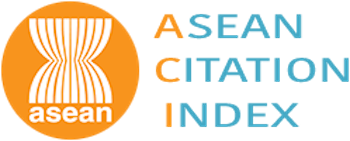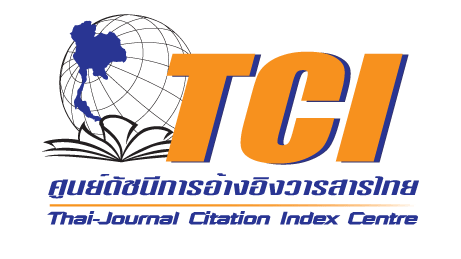ปัจจัยบ่งชี้และอัตราการมีงานทำของผู้พิการบาดเจ็บไขสันหลัง
Keywords:
บาดเจ็บไขสันหลัง, การทำงาน, อาชีพ, spinal cord injury, remunerative employment, predictive factorAbstract
Employment Rate of Thais with Spinal Cord Injury and Predictive Factors
Vongpakorn P, Kovindha A.
Department of Rehabilitation Medicine, Faculty of Medicine, Chiang Mai University
Objective: To identify the employment rate of persons with traumatic spinal cord injury (SCI) in Thailand and predictive factors of remunerative employment.
Design: A cross-sectional survey between April 2011 - August 2012.
Setting: Maharaj Nakorn Chiang Mai Hospital.
Subjects: One hundred persons with SCI for at least 2 years (age between 15 - 59 years old at the time of interview).
Method: Participants were interviewed using questionnaires to identify demographic data and work-related variables. The Spinal Cord Independence Measure version III (SCIM-III) was used to assess functions.
Results: At the time of survey, 47% were engaged in remunerative employment: Among those who worked, 66% were self-employed, 27.6% were full-time employed and 6.4% were part-time employed; 48.9% were satisfied with their income. Using logistic regression analysis, driving ability and duration of injury were associated with employment. Those with ability to drive had a 5.05-fold higher chance of employment than those without (95% CI, 1.98 - 12.87). Every one year post-injury chance of employment increased 1.11-fold (95% CI, 1.02 – 1.20). Other factors such as age, SCIM scores, level of injury, wheelchair ability, vocational training and a loan for self-employment were not related to employment.
Conclusion: Employment rate of spinal cord injured Thais is nearly 50%. Ability to drive is a strong predictive factor to remunerative employment. Therefore, to increase the opportunity of employment, ability to drive should be promoted to SCI persons.
บทคัดย่อ
วัตถุประสงค์: เพื่อสำรวจอัตราการทำงาน และค้นหาปัจจัยที่ เป็นตัวบ่งชี้การมีงานทำของผู้พิการบาดเจ็บไขสันหลัง
รูปแบบการวิจัย: การสำรวจในระหว่าง เมษายน พ.ศ 2554 – สิงหาคม พ.ศ. 2555
สถานที่ทำวิจัย: โรงพยาบาลมหาราชนครเชียงใหม่
กลุ่มประชากร: ผู้พิการบาดเจ็บไขสันหลังอายุระหว่าง 15 – 59 ปี ที่บาดเจ็บไขสันหลังตั้งแต่ 2 ปีขึ้นไปจำนวน 100 คน
วิธีการศึกษา: สัมภาษณ์ผู้เข้าร่วมวิจัย โดยอาศัยแบบสอบถามที่แบ่งออกเป็น ข้อมูลส่วนตัว, ผลการประเมินสมรรถนะโดยใช้ Spinal Cord Independence Measure (SCIM) และปัจจัยที่ คาดว่าเกี่ยวข้องกับการทำงาน
ผลการศึกษา: ผู้พิการบาดเจ็บไขสันหลังมีอัตราการทำงาน ร้อยละ 47 โดยในกลุ่มที่มีงานทำ ร้อยละ 66 ประกอบอาชีพอิสระ, ร้อยละ 27.6 เป็นลูกจ้างเต็มเวลา และร้อยละ 6.4 เป็นลูกจ้างไม่เต็มเวลา และร้อยละ 48.9 พอใจกับรายได้ เมื่อวิเคราะห์ทางสถิติด้วย logistic regression พบว่า ความสามารถในการขับขี่ยานพาหนะและระยะเวลาหลังบาดเจ็บไขสันหลังเป็นปัจจัยที่บ่งชี้การมีงานทำของผู้พิการบาดเจ็บไขสันหลัง ทั้งนี้ ผู้ที่มีความสามารถขับขี่ยานพาหนะจะมีโอกาสมีงานทำมากกว่าผู้ที่ขับขี่ไม่ได้ 5.05 เท่า (95% CI, 1.98 - 12.87) ส่วนระยะเวลาหลังบาดเจ็บไขสันหลังที่เพิ่มขึ้นหนึ่งปีจะเพิ่มโอกาสการมีงานทำ 1.11 เท่า (95% CI, 1.02 - 1.20) ส่วนปัจจัยอื่น ๆ ได้แก่ อายุ, คะแนน SCIM, ระดับไขสันหลังที่บาดเจ็บ,การกู้ยืมเงินจากภาครัฐ, ความสามารถการใช้วีลแชร์ และการได้รับการฝึกอาชีพหลังบาดเจ็บไขสันหลัง ไม่มีผลต่อการมีงานทำ
สรุป: ผู้พิการบาดเจ็บไขสันหลังในประเทศไทยมีอัตราการทำงานร้อยละ 47 โดยมีปัจจัยสำคัญที่เป็นตัวบ่งชี้การมีงานทำ คือ ความสามารถขับขี่ยานพาหนะ ดังนั้น เราควรพัฒนาขีดความสามารถด้านการขับขี่ยานพาหนะให้ผู้พิการบาดเจ็บไขสันหลังเพื่อเพิ่มโอกาสทำงาน





